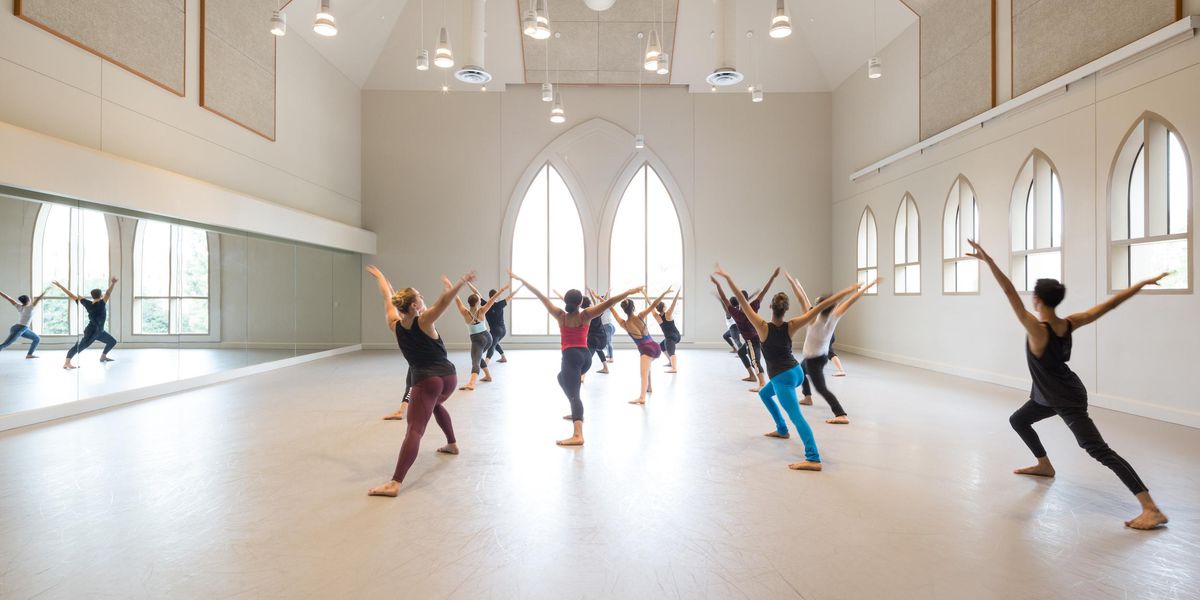On Broadway: Toe to Toe
Choreographers Kelly Devine and Steven Hoggett put Rocky in the ring.
It seemed a highly dubious vanity project at the time: a tough-talking, squish-hearted, low-budget boxing movie, written by and starring an unknown actor. But Rocky became a surprise hit as well as a franchise; Sylvester Stallone became a genuine star; “Yo, Adrian” became a catchphrase; and the movie won the 1976 Best Picture Oscar.
Above: Real punches are thrown in Hoggett’s fight scenes. Photo courtesy
Rocky.
Still, despite Rocky’s history of upending expectations, Broadway was leery when Stallone began shopping around the idea of a musical version. Over time, he enlisted Tony winner Thomas Meehan (The Producers) to work with him on the book, Tony winners Lynn Ahrens and Stephen Flaherty (Ragtime) to do the score and Tony nominee Alex Timbers (Bloody Bloody Andrew Jackson) to direct. Then Kelly Devine (Rock of Ages) and Tony nominee Steven Hoggett (Once) came on board to choreograph.
They had their doubts about Rocky: The Musical as well. “There was a healthy amount of skepticism,” says Hoggett, who is in charge of the boxing sequences. “I say ‘healthy’ because in order to really think about the practicalities, you have to overcome a certain sense of it once being an iconic film, and look beyond that.” Devine, who’s creating the dance scenes, had similar concerns, wondering how the movie’s famous training montage could be evoked theatrically. But the stage’s limitations, Hoggett notes, also provide occasions for creativity. “The skepticism,” he says, “very quickly resolves into a sense of opportunity.”
The musical, which opens on Broadway this month after its 2012 premiere in Germany, is rooted almost entirely in naturalistic movement: There are only two out-and-out dance numbers, and in the boxing scenes, real punches are thrown. The two choreographers agreed at the outset that “it was really important to make the world of Rocky gritty and authentic,” Devine says. They wanted nothing that would suggest “dancing boxers” in a traditional musical. The goal, she says, was to take “these professional dancers that are trained in all areas and make them feel like legitimate, serious boxers.”
As it happens, Devine and Hoggett both came to the project with some boxing know-how. In Los Angeles, she had taken to kick-boxing as exercise after an offer of free lessons came her way. In Britain, he had immersed himself in the sport for the play Beautiful Burnout, a boxing story co-produced by the National Theatre of Scotland and his own physical theater troupe, Frantic Assembly.
But they were coming at Rocky from different sides of the Atlantic, with differing professional backgrounds. Still, Hoggett says, “We’ve formed a kind of symbiotic relationship.” In fact, if you ask them what they find most challenging in the show, Devine talks about the demands of Hoggett’s climactic boxing match, in which audience members come onstage to watch underdog Rocky Balboa take on flamboyant champ Apollo Creed; and Hoggett cites Devine’s work on the training sequences and “Patriotic,” the flag-waving production number in which Apollo and his entourage display their American bona fides.
Above: Devine and Hoggett in rehearsal. Photo by Matthew Murphy, Courtesy
Rocky.
“In asking the pair of us to work on the project,” Hoggett says, “Alex was very smart. The scale is very big; there’s a huge spectrum of physicality and choreography and movement. So it would be a very big job for just one person—possibly too much.” And two heads are always better than one, Devine adds. “We can bounce things off each other. I can say, ‘I’m stuck here—does this look like garbage?’ ”
Meanwhile, the rehearsals, they agree, look more like boot camp than dance class. “Steven puts the guys through a really rigorous warm-up, with a lot of circuit training” Devine says. “Like lifting a chair above your head for a minute,” Hoggett explains, “and then being in a pike position for a minute, and doing push-ups in different hand-space relationships—the kind of stuff we picked up in boxing gyms.”
In treating the performers like athletes rather than dancers, Devine and Hoggett are not just concerned with keeping the show true to life. They’re also thinking about Rocky’s day-in, day-out physical demands. “A boxer will train for ten weeks and fight once,” Hoggett says. “Our guys have to be fighting eight times a week.”
From Backstage
Ensemble:
18, plus six swings
Dance captain
: James Brown III, who has been a performer (Memphis), a dance captain (Ghost) and a fight captain (The Little Mermaid)
Fight captain:
Vince Oddo, who worked with Hoggett on the national tour of American Idiot
Specialties:
“We needed quadruple threats, men who could act, sing, dance and box,” says Hoggett. “They had to be able to pick up a choreographed phrase, learn it as you would choreography, but then perform it as a boxing sequence—as if it were not choreography.”
Pre-show warm-up:
“Sweat-heavy”




